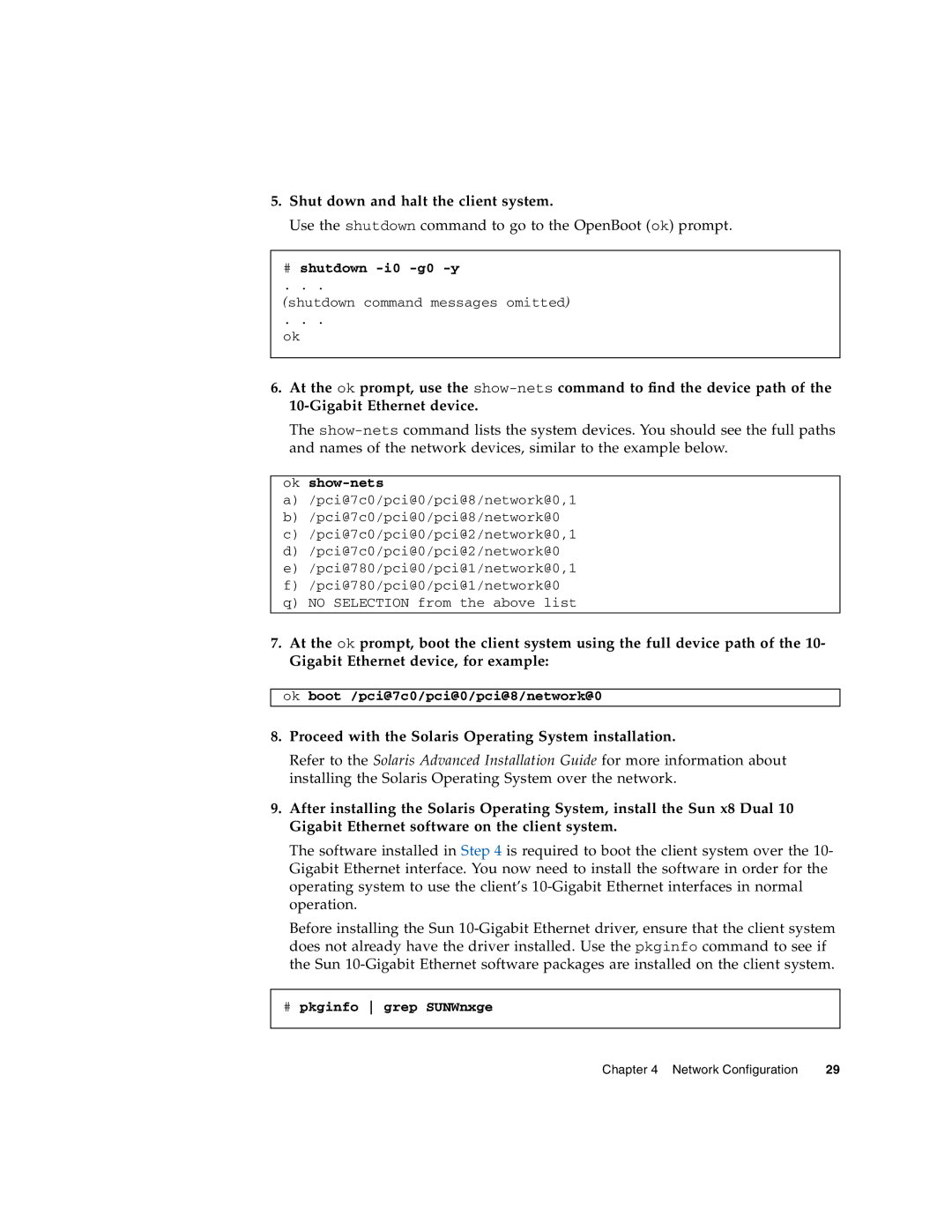
5.Shut down and halt the client system.
Use the shutdown command to go to the OpenBoot (ok) prompt.
#shutdown -i0 -g0 -y
. . .
(shutdown command messages omitted)
. . .
ok
6.At the ok prompt, use the
The
ok show-nets
a)/pci@7c0/pci@0/pci@8/network@0,1
b)/pci@7c0/pci@0/pci@8/network@0
c)/pci@7c0/pci@0/pci@2/network@0,1
d)/pci@7c0/pci@0/pci@2/network@0
e)/pci@780/pci@0/pci@1/network@0,1
f)/pci@780/pci@0/pci@1/network@0
q)NO SELECTION from the above list
7.At the ok prompt, boot the client system using the full device path of the 10-
Gigabit Ethernet device, for example:
ok boot /pci@7c0/pci@0/pci@8/network@0
8.Proceed with the Solaris Operating System installation.
Refer to the Solaris Advanced Installation Guide for more information about installing the Solaris Operating System over the network.
9.After installing the Solaris Operating System, install the Sun x8 Dual 10 Gigabit Ethernet software on the client system.
The software installed in Step 4 is required to boot the client system over the 10- Gigabit Ethernet interface. You now need to install the software in order for the operating system to use the client’s
Before installing the Sun
#pkginfo grep SUNWnxge
Chapter 4 Network Configuration | 29 |
